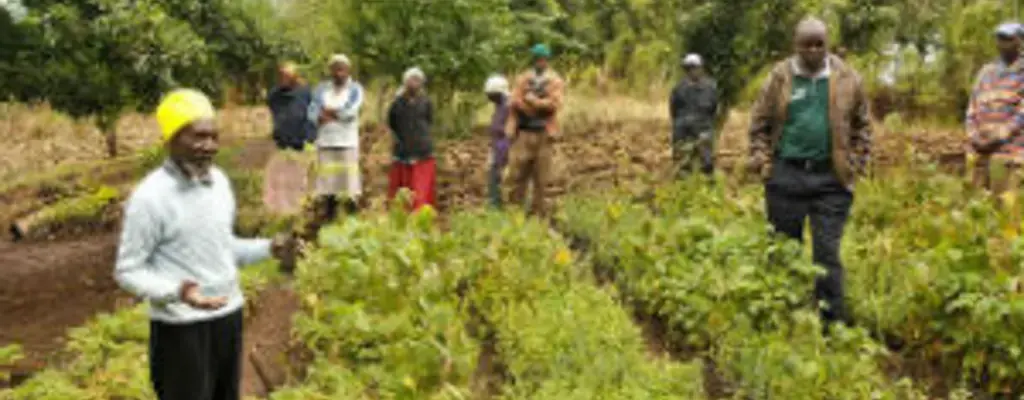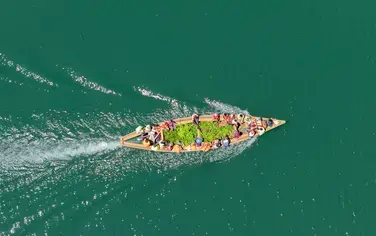This blog was originally published by the World Resources Institute on November 18, 2016. Read the original here.
The momentum for large-scale restoration has never been stronger. Restoration is increasingly recognized as a key strategy to meet climate change and sustainable development goals as well as growing demand for food, water and energy.
In October 2015, the African Union endorsed a target to restore 100 million hectares (247 million acres) of degraded land by 2030. The African Forest Landscape Restoration initiative (AFR100) was launched at COP21 to facilitate action towards this target, and as a contribution to the Bonn Challenge and African Resilient Landscapes Initiative (ARLI). AFR100 connects African nations with targeted technical and financial support to scale up restoration on the ground.
The New Economic Partnership for Africa’s Development (NEPAD) serves as the AFR100 Secretariat. As Mamadou Diakité, NEPAD’s Team Leader for Sustainable Land and Water Management describes it, “Interest in restoration in Africa is at an all-time high. This initiative provides an opportunity for Africa and its partners to collectively work together toward ensuring accelerated restoration efforts to enhance food security, increase climate change resilience and mitigation, and combat rural poverty.”
As the AFR100 turns one year old and partners assemble again for the COP22 climate summit in Marrakech, we should ask the question – how much progress has been made?
Progress to secure political commitments to restoration has been faster than expected. To date, 21 African nations have signed onto AFR100 and committed a combined 63.3 million hectares (156 million acres) of land to be restored. Twelve technical partners and nine financial partners have signed on to provide support. Impact investors have earmarked $481 million in private sector funds for restoration, while partners like the World Bank have lined up about $1 billion in development finance through the Africa Climate Business Plan.
Turning Commitments into Results on the Ground
With so many political and financial commitments already lined up, where are we in terms of implementation on the ground? AFR100 partners gathered at a conference last month in Addis Ababa to discuss progress. They identified five focal areas that will be key to accelerating restoration on the ground:
-
Monitoring of progress: On-the-ground monitoring – encompassing both tree regrowth and changes in socio-economic indicators—is essential. Collect Earth is a cutting-edge monitoring tool that pairs data collected through Google Earth with high-resolution satellite imagery. In Rwanda, AFR100 partners are using Collect Earth to monitor restoration progress in two districts.
-
Mapping opportunities: With support from AFR100 technical partners, nine countries have taken steps to map national restoration opportunities. Ethiopia is generating national opportunity maps, established a 15 million hectare (37 million acre) restoration target, and is identifying priority landscapes for implementation. Kenya recently did the same, using maps to make a pledge to restore 5.1 million hectares (12.6 million acres). Malawi is conducting a national assessment of restoration opportunities with support from WRI and the International Union for the Conservation of Nature (IUCN) that includes mapping areas where a suite of restoration interventions could be implemented.
-
Community mobilization: Restoration depends on changes in attitudes, shifts in behaviors and improved management practices, particularly by rural communities. This has been shown in Tigray, Ethiopia, where a visionary local leader harnessed voluntary mass community labor and local knowledge to implement large-scale restoration across tens of thousands of hectares. Last month, more than 50 AFR100 partners from 16 countries joined a field visit to Tigray, where they saw this restoration success firsthand and spoke with local champions about the factors that made it possible. Over the past 20 years, similar community-based initiatives have successfully restored more than one million hectares (2.4 million acres) with support from regional governments and development partners.
-
Strong land and resource rights: When land and resource rights are secure, communities are empowered to govern resource use and are more likely to retain the benefits derived from restoration. Communities empowered by decentralization policies and clear resource rights are both enabled to prevent land degradation and motivated to invest in restoration. In Niger, strengthening farmers’ rights to manage trees on cropland resulted in restoration on a massive scale, with an estimated 200 million trees regenerated across 5 million hectares (12.4 million acres) of agricultural land.
-
Access to finance: Financing restoration at scale requires tapping new sources of private finance and strengthening markets for the goods and services delivered by restoration activities. In partnership with AFR100 and the New Restoration Economy, Kenya is working to identify restoration-focused companies and matching them with interested investors.
No One Can Go It Alone on Restoration
Restoring 100 million hectares of degraded land is a huge challenge that requires engagement from partners in government, communities, civil society, NGOs and the private sector. Fortunately a number of initiatives are working to accelerate sustainable landscape management in Africa. These include the Bonn Challenge, ARLI and the Land Degradation Neutrality target, among others.
Reinforcing the links across these initiatives is essential if we are to derive maximum value from the considerable technical, human and financial resources associated with each, while effectively supporting countries in meeting their environment and development objectives.
In the year since its launch, AFR100 has sparked enthusiasm and strong commitment among its partners. The time is ripe to translate that commitment into large-scale restoration on the ground to meet food security, poverty reduction and climate change resilience needs for millions of households.




